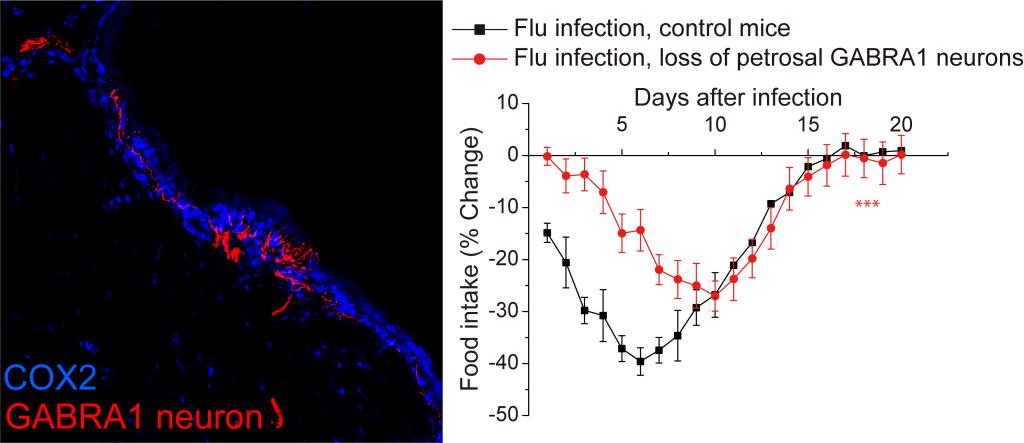
Most people get sick several times a year. Sickness is a behavioral state orchestrated by the brain and is characterized by fever, loss of appetite, lethargy and, sometimes, a cough and nausea. Surprisingly, it is not understood how the brain becomes aware that a pathogen — for example, an infectious bacterium or virus — is present in the body. Bin et al discover a population of glossopharyngeal sensory neurons that is activated through prostaglandin signaling, and is required for influenza-induced sickness behavior in mice. This small group of airway neurons provides a direct communication route between nasopharynx and brain, and orchestrates systemic responses during a respiratory virus infection.